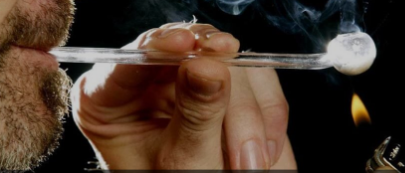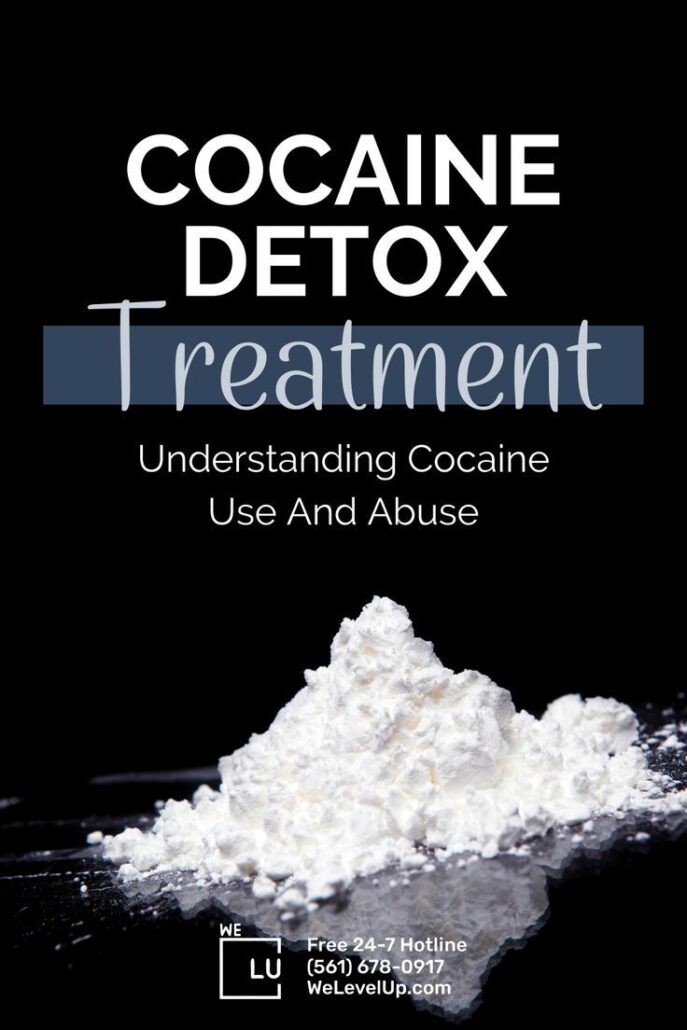Crack vs Meth
Crack vs Meth is both a highly addictive and dangerous illegal substance. However, there are differences in the chemical composition, usage, and certain physiological effects on the body.
Methamphetamine, which is also referred to as “meth,” “ice,” or “crystal,” is a synthetic stimulant that can be administered through smoking, snorting, injection, or ingestion. The substance in question induces activation of the central nervous system and enhances dopamine release, leading to euphoria, heightened vigilance, and augmented vitality. Methamphetamine has the potential to induce addiction, paranoia, violence, and psychosis, which can result in both physical and mental health complications.
Is Crack Meth?
Crack cocaine, medically referred to as “rock cocaine,” is a form of cocaine that has undergone a chemical alteration resulting in a crystalline structure. It is commonly consumed through inhalation via smoking. While it does stimulate the central nervous system and enhance dopamine release,
Is Crack and Meth the Same?
Crack vs meth has a significant propensity for addiction and presents grave health hazards. Methamphetamine, however, is deemed more hazardous due to its prolonged duration of effect and heightened potential to cause psychosis and aggressive conduct. In addition, in comparison to other forms of drug administration, the inhalation of crack cocaine may lead to a higher incidence of respiratory complications.
Are Crack and Meth the Same Thing?
Crack cocaine is a derivative of cocaine that has undergone chemical processing to produce a solid, crystalline substance typically inhaled through smoking. The acute effects of crack cocaine are potent but of brief duration, which may result in a compulsion to engage in recurrent use. The use of crack cocaine may result in various medical complications, such as respiratory distress, cardiac impairment, and psychiatric disorders like anxiety, aggression, and paranoia.
Methamphetamine, commonly known as meth, is a potent stimulant drug with a high potential for addiction. It is usually consumed through smoking, snorting, or injection. Methamphetamine can induce significant physiological consequences on the human body, including tachycardia, hypertension, and cardiovascular impairment. The use of methamphetamine may result in mental health complications such as depression, anxiety, and psychosis.

Skip To:
Learn More:
- Meth Teeth Images, Why Does Meth Ruin Teeth?
- What Do Crack Pipes Look Like? Cocaine Abuse Facts & Help Options
- Bongs for Meth. What is a Meth Bong? Identifying & Understanding the Dangerous Practice and Its Risks
- What Are The Signs of Meth Use? Meth Abuse Symptoms, Effects, & Addiction Treatment
- How Long Does Crack Cocaine Stay in Your System?
Get Help. Get Better. Get Your Life Back.
Searching for Accredited Drug & Alcohol Rehab Centers Near You? Or Mental Health Support?
Even if you have failed previously, relapsed, or are in a difficult crisis, we stand ready to support you. Our trusted behavioral health specialists will not give up on you. Call us when you feel ready or want someone to speak to about therapy alternatives to change your life. Even if we cannot assist you, we will lead you wherever you can get support. There is no obligation. Call our hotline today.
FREE Addiction Hotline – Call 24/7Methamphetamine Statistics
Methamphetamine is a highly addictive and dangerous drug that poses significant risks to the health and well-being of individuals who use it. Despite the many negative consequences of meth abuse, the problem continues to affect communities across the United States and worldwide.
In recent years, studies and research have shed light on the scope and impact of meth abuse, highlighting the urgent need for effective prevention, treatment, and intervention strategies. This section will examine some of the latest statistics and findings on meth abuse, drawing from recent studies and reports.
550 Million
Meth costs the United States $550 million in drug treatment programs annually.
Source: NIDA
16 Million
According to the 2017 National Survey on Drug Use and Health, 1.6 million people reported using Meth in the past year.
Source: NIDA
964,000 people
An estimated 964,000 people aged 12 and older qualified as having a Meth use disorder in 2017.
Source: NIDA
Methamphetamine Factsheet
What is Methamphetamine?
Meth is a highly addictive stimulant that can cause addiction in as little as a single use. This is mainly due to the rush of dopamine produced by the drug. Dopamine is a chemical that’s not only responsible for inducing feelings of pleasure but also for motivation, memory retention, learning, and reward processing. The rush of dopamine produced by Meth is much higher than the natural amount of dopamine produced in the brain, which causes people to continue using the drug to keep those heightened and pleasurable feelings.
Methamphetamine Effects
Abuse of methamphetamine includes any illegal usage of the drug. When smoked or injected, meth causes a “rush” similar to that experienced when using crack cocaine; this is brought on by increased heart rate, blood pressure, and pleasure-inducing neurotransmitters in the brain. Snorting meth produces an ecstatic feeling but not a rush.
The infusion rush produces the biggest effects, lasting up to 30 minutes. Depending on the drug’s use, users enjoy a sustained high that can continue between 8 and 24 hours after the first surge. Meth injection delivers a higher high than smoking or snorting it, although it lasts less.
Street Names for Methamphetamine
Meth and Crystal Meth are chemically identical substances, despite the differences in the structural composition of the two varieties. Methamphetamine goes by the following street names:
- Glass.
- Speed.
- Ice.
- Crystal.
- Crank.
- Tweak.
- Redneck Cocaine.
- Chalk.
The vast bulk of meth sold today comes from imports and clandestine labs. A few people often generate modest amounts of the material in “home labs” or “stove tops,” where the product is typically cooked. Meth is also made in cartel “super labs,” which use high-end machinery to generate the drug in greater quantities and with superior quality.
The stimulant Ephedrine or Pseudoephedrine, present in certain popular over-the-counter cough and cold treatments, is often the main component in meth. Meth labs are famously hazardous due to the toxic and flammable gases and chemicals generated during the production of the drug.
Most Popular FAQs About Subutex
-
What’s The Main Difference Between Crack Versus Meth?
Is meth and crack the same thing? The primary distinction between crack and meth is their chemical composition and method of consumption. Crack is a processed form of cocaine smoked as a rock crystal, whereas meth is a synthetic drug that can be smoked, snorted, or injected. Furthermore, crack has a shorter duration of effect, lasting 5-10 minutes, whereas meth can last up to 12 hours. Both drugs are extremely addictive and can lead to serious physical and mental health issues.
-
Meth Versus Crack, Which is More Dangerous?
Meth vs crack. While crack and meth have distinct impacts on individuals, they are both highly lethal substances.
-
Crack Vs Crystal Meth, Which is More Addictive?
Crystal meth vs crack. Both crack cocaine and crystal methamphetamine, commonly referred to as crystal meth, are extremely addictive substances that can lead to severe health complications and catastrophic outcomes for patients and their loved ones.
-
What’s The Difference Between Crack And Meth? Are crack and meth the same?
Crack cocaine and crystal methamphetamine are both highly addictive substances. Crack cocaine is typically smoked, while crystal methamphetamine can be smoked, snorted, or injected. Crack vs Meth, Although they possess distinct chemical compositions and elicit diverse physiological responses, both substances can potentially cause severe medical complications and dependency.
-
Is Crack The Same As Meth? Is crack meth?
Crack cocaine and crystal methamphetamine, commonly known as crystal meth, are two distinct substances with unique chemical compositions and physiological impacts. Both substances are potent stimulants with a high potential for addiction and significant adverse effects on the user’s health.
-
Is Meth Worse Than Crack?
what’s worse crack or meth? Given that both stimulants—crack cocaine and methamphetamine—can be extremely addictive and have major negative effects on the user, it is difficult to tell which is worse.
Crack cocaine vs meth. Although they have different chemical compositions and physiological consequences, they can result in addiction, overdose, and long-term health issues. The frequency and duration of usage, the mode of administration, and individual factors, including heredity and underlying medical issues, can all affect how severe harm each substance can produce.
What Is The Difference Between Crack And Meth In Terms of Effects?

Are Meth And Crack The Same Thing?
What is the difference between meth and crack? Crack cocaine and methamphetamine are distinct stimulant substances that produce comparable physiological and psychological outcomes. Nonetheless, there exist dissimilarities in their impact on physiology and their general influence on an individual’s well-being.
Crack cocaine is a smoked form of cocaine, whereas methamphetamine is a synthetic stimulant that can be administered through various routes such as smoking, snorting, injecting, or oral ingestion. Both pharmaceuticals elicit a potent surge of euphoria and energy. However, methamphetamine has a prolonged and heightened impact.
What’s the difference between crack and meth?
Some of the short-term effects of crack and methamphetamine include elevated heart rate, blood pressure, and body temperature, as well as reduced appetite and sleep. However, methamphetamine can also induce more severe adverse effects such as psychosis, hallucinations, and paranoia. The utilization of methamphetamine has been correlated with an elevated likelihood of overdose and enduring medical conditions, including cardiovascular disease, renal impairment, and dental complications.
Is crack and meth the same thing?
What’s worse, crack versus meth? Regarding addiction potential, both crack and meth are highly addictive, and repeated use can lead to physical dependence and withdrawal symptoms when stopping use. Overall, both drugs have serious risks and should be avoided, and anyone struggling with addiction should seek professional help.

Get Your Life Back
Find Hope & Recovery. Get Safe Comfortable Detox, Addiction Rehab & Mental Health Dual Diagnosis High-Quality Care at the We Level Up Treatment Centers Network.
Hotline (877) 378-4154What’s The Difference Between Meth And Crack?
Effects on the Body and Brain
Methamphetamine and crack cocaine are potent stimulant drugs that pose a significant risk of addiction and harm to the body and brain. However, these substances vary in chemical composition, delivery method, and degree of impact. As a medical professional, it is important to understand the distinct variances between the physiological and neurological effects of methamphetamine and crack cocaine.
- The molecular composition. Methamphetamine is a synthetic stimulant drug that shares chemical similarities with amphetamines. On the other hand, crack cocaine is a form of cocaine that has undergone processing with baking soda and water to produce a crystalline rock-like substance.
- Method of delivery. Methamphetamine can be administered via intranasal, inhalation, or intravenous routes, whereas crack cocaine is commonly smoked.
- Duration of the effects. The duration of Methamphetamine’s effects can extend up to 12 hours or more, whereas the effects of Crack Cocaine usually last for a period of 5-10 minutes.
- The degree of impact of the symptoms. Methamphetamine elicits a more potent euphoric effect than cocaine in individuals, accompanied by heightened energy and alertness that can persist for several hours. The use of crack cocaine results in a brief yet intense state of heightened pleasure commonly referred to as a rush or euphoric blast.
- Physiological manifestations. Both methamphetamine and cocaine can induce various physiological effects, such as heightened heart rate, blood pressure, body temperature, reduced appetite, dilated pupils, and xerostomia. Methamphetamine use may result in the development of cutaneous ulcers, dental caries, and unintended weight loss. Meth crack back. Similarly, crack cocaine use may lead to respiratory complications and thoracic discomfort.
- Psychological manifestations. Both medications can induce psychological symptoms such as paranoia, anxiety, and hallucinations. Methamphetamine use may result in symptoms of aggression, irritability, and mood lability. Conversely, cocaine use may lead to symptoms of depression and suicidal ideation.
- Substance dependence and discontinuation syndrome. Both methamphetamine and cocaine are highly addictive substances that can cause severe withdrawal symptoms when an individual attempts to discontinue their use. Withdrawal from methamphetamine may result in symptoms such as fatigue, depression, and anxiety, whereas withdrawal from crack cocaine may cause cravings, agitation, and restlessness.
Crack vs Meth Addiction Treatment
The standard approach for addressing methamphetamine addiction entails medication-assisted treatment, behavioral therapy, participation in support groups, and enrollment in residential treatment programs. The objectives of meth and crack addiction treatment are to assist patients in discontinuing methamphetamine use, coping with withdrawal symptoms, and acquiring the abilities and tactics necessary to sustain long-term abstinence.
The application of medication-assisted treatment (MAT) entails the utilization of medications to regulate the physical symptoms of withdrawal and cravings that may manifest when a patient discontinues the use of methamphetamine. Pharmaceuticals such as buprenorphine or naltrexone are efficacious in mitigating cravings and forestalling relapse.
In the treatment of meth addiction, behavioral therapy is an essential element. This therapeutic approach centers on modifying conduct and cognitive patterns contributing to substance abuse. Cognitive-behavioral therapy (CBT) and contingency management are two evidence-based therapeutic interventions that have demonstrated efficacy in treating meth versus crack addiction.

World-class, Accredited, 5-Star Reviewed, Effective Addiction & Mental Health Programs. Complete Behavioral Health Inpatient Rehab, Detox plus Co-occuring Disorders Therapy.
CALL (877) 378-4154End the Addiction Pain. End the Emotional Rollercoaster. Get Your Life Back. Start Drug, Alcohol & Dual Diagnosis Mental Health Treatment Now. Get Free No-obligation Guidance by Substance Abuse Specialists Who Understand Addiction & Mental Health Recovery & Know How to Help.
We Level Up Meth and Crack Dual Diagnosis Treatment
Co-occurring disorders, commonly called dual diagnosis, pose a significant challenge in managing substance abuse. When diagnosed with comorbid substance use disorder and mental health disorder, developing a treatment plan that concurrently targets both conditions is imperative. At We Level Up, our dual diagnosis treatment center, we acknowledge the association between comorbid conditions and occurrences of substance use disorder.
To provide effective treatment for clients with dual diagnosis, our care plan prioritizes managing physical withdrawal symptoms, addressing the psychological factors associated with drug use, and managing any underlying mental health conditions. A comprehensive psychiatric evaluation is performed to determine potential treatment options, followed by consultations with mental health therapists and healthcare providers for access to psychotherapy and pharmacotherapy.
At We Level Up, we acknowledge the intricacies of how mental and substance abuse disorders can interplay and lead to a destructive cycle of addiction. Hence, we provide tailored medical intervention for individuals with co-occurring disorders to optimize the likelihood of genuine convalescence and sustained rehabilitation.
We acknowledge that acknowledging a mental health condition can be difficult; however, addressing the substance abuse issue becomes more manageable once a precise diagnosis is made and appropriate treatment is administered. Acknowledging that a duly trained medical professional can only diagnose these underlying conditions is imperative. Suppose you suspect that you have a co-occurring disorder in addition to addiction. In that case, it is strongly recommended that you seek the services of a certified treatment facility to initiate your path toward recuperation. Please contact We Level Up at your earliest convenience for professional dual diagnosis treatment.
Experience Transformative Recovery at the We Level Up Treatment Center.
See our authentic success stories. Get inspired. Get the help you deserve.



Start a New Life
Begin with a free call to an addiction & behavioral health treatment advisor. Learn more about our dual-diagnosis programs. The We Level Up treatment center network delivers various recovery programs at each treatment facility. Call to learn more.
- Personalized Care
- Caring Accountable Staff
- World-class Amenities
- Licensed & Accredited
- Renowned w/ 5-Star Reviews
We’ll Call You
Crack and Meth Informative Video
When referring to the physical degradation of facial characteristics of methamphetamine abusers, the phrase “the faces of meth” is frequently used. Images of people before and after they get addicted to methamphetamine serve as a harsh reminder of the physical harm the drug causes. It’s critical to be aware of the many harmful effects of methamphetamine use, including dental deterioration and “meth mouth.” It is vital to recognize the signs of meth addiction and get proper treatment to avoid long-term harm.
Faces of Meth Before and After Images
Search Crack vs Meth, Similarities and Differences Topics & Resources
Sources
- National Institute on Drug Abuse (NIDA) – Methamphetamine DrugFacts: https://www.drugabuse.gov/publications/drugfacts/methamphetamine Tags: Crack vs Meth / Meth vs Crack
- National Institutes of Health (NIH) – Methamphetamine: https://medlineplus.gov/methamphetamine.html Tags: Crack vs Meth / Meth vs Crack
- United States Department of Health and Human Services (HHS) – Methamphetamine: https://www.hhs.gov/ash/oah/adolescent-development/substance-use/drugs/stimulants/methamphetamine/index.html Tags: Crack vs Meth / Meth vs Crack